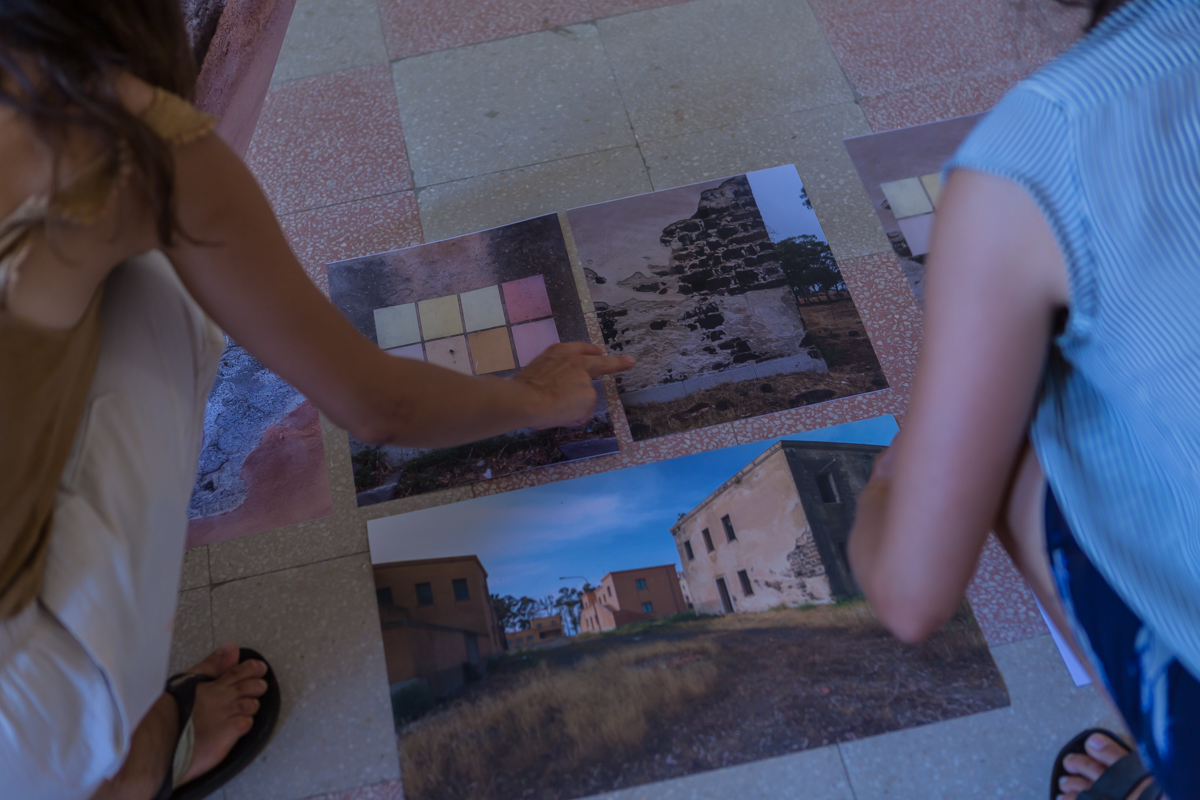2cm the thickness of Fascism
︎︎︎discursive exhibition
03-10.09. 2022
at The Entity of Decolonisation, Borgo

In the introduction to Uses of Heritage, Laurajane Smith argues that the authentic essence of heritage—the pivotal juncture when our emotions and personal identity become genuinely involved—resides not solely in the acquisition of material possessions, but rather in the process of transmitting and receiving both memories and knowledge.
Additionally, this essence is made manifest in how we subsequently employ, transform, and reconstruct these memories and knowledge, aiding us in comprehending and interpreting not only our present state of being, but also our aspirations for the future.
In the same book, Smith introduces the concept of ‘Authorized Heritage Discourse’ (AHD) to refer to a dominant set of ideas, values and practices that shape and regulate how heritage is defined, understood, and managed within society.
According to Smith, AHD represents a particular way of constructing and presenting heritage that is influenced by institutions, experts, and governing bodies. It establishes a hierarchy of significance, determining what is considered valuable and worthy of preservation, while marginalizing or excluding other forms of heritage that do not align with the authorized narratives.
In the case of Borgo
However, if the primary purpose of the borghi during fascism was drawing an ideal image of a city in which the power of the fascist regime is depicted why should we seek to restore this idea in the present day?
Although Borgo
Behind the surface of uniform plaster lies the intricate entanglement of the colonial past where new imported technology intersects with local materials and building techniques.


︎ ENTITY OF DECOLONISATION

The second edition of the Difficult Heritage Summer School seeks to redefine the contours of colonial architectural heritage and the narratives surrounding it. The School raises critical questions about access, re-use, and entitlement to this painful and violent heritage.
The program aims to strike the right balance between pre-structured activities and unplanned, spontaneous ones to encourage ownership and proactiveness among all participants, including students, guests, and local citizens. Field trips set the pace for the group as they explore the surroundings and engage with local architectural, industrial, and landscape heritage. Mornings are dedicated to self-organized group activities focused on three main topics:1. Space & Environment Beyond its modernist and fascist architecture and design, Borgo Rizza embodies and connects conflicting meanings, “othered” spaces, and environments, existing through a series of territorial ramifications. By shifting our attention from buildings to bodies, minds, nature, and territories, these activities aim to challenge traditional approaches to heritage preservation and architectural knowledge.



The second edition of the Difficult Heritage Summer School seeks to redefine the contours of colonial architectural heritage and the narratives surrounding it. The School raises critical questions about access, re-use, and entitlement to this painful and violent heritage.
The program aims to strike the right balance between pre-structured activities and unplanned, spontaneous ones to encourage ownership and proactiveness among all participants, including students, guests, and local citizens. Field trips set the pace for the group as they explore the surroundings and engage with local architectural, industrial, and landscape heritage. Mornings are dedicated to self-organized group activities focused on three main topics:1. Space & Environment Beyond its modernist and fascist architecture and design, Borgo Rizza embodies and connects conflicting meanings, “othered” spaces, and environments, existing through a series of territorial ramifications. By shifting our attention from buildings to bodies, minds, nature, and territories, these activities aim to challenge traditional approaches to heritage preservation and architectural knowledge.

